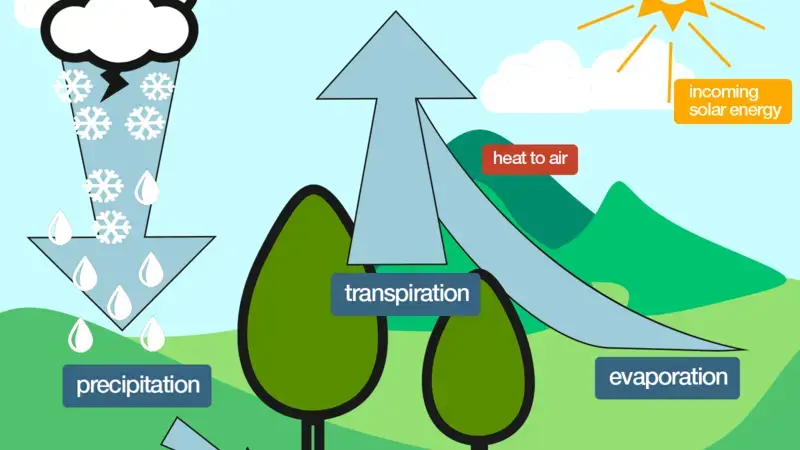Estimating water consumption rates more effectively

A new understanding of the relationship between evapotranspiration and available soil moisture is yielding critical information on water consumption and crop-water productivity.
Almost 75 percent of global freshwater is used for agriculture annually, and most of this water returns to the atmosphere via evapotranspiration. Consequently, an accurate estimation of evapotranspiration over agricultural fields provides critical information about water consumption across various scales, and in turn, crop water productivity – the amount of grain produced per unit of water.
Given current water shortages, a better understanding of water consumption and productivity is critical for global food security. It helps identify when and where interventions are needed, and provides the information that decision makers require to implement more sustainable water policies.
Estimating evapotranspiration more effectively
It is generally assumed that evapotranspiration is mainly constrained by soil moisture: a typical way to characterize evapotranspiration is to therefore calculate potential evapotranspiration and then account for soil moisture constraints – an estimation known as the evaporative fraction.
ICARDA contributed to a study that calculated evaporative fraction from field observations in a dryland wheat field in Australia, obtaining information on water availability at the surface and various layers of the root zone. Available Water Fraction – the plant available water between field capacity and wilting point – was used as a proxy for soil moisture at different depths.
Scientists attempted to: examine seasonal and inter-annual variability of soil moisture stress, vegetation biomass, and net radiation in two cropping seasons; investigate how surface or root zone soil moisture content varied with net radiation, soil wetness, and season; and determine the meteorological and bio-physical factors controlling the relationship between evaporative function and root zone soil moisture.
Data collected included: turbulent fluxes; surface reflectance – to represent vegetation dynamics; soil moisture; soil and vegetation surface temperatures; air temperatures; relative humidity; and wind speed and direction.
Understanding the relationship between evapotranspiration and soil moisture
The relationship between the evaporative fraction and the available water fraction in the root zone was non-linear in 2012 but linear in 2013, and this was mostly attributed to the marked difference in rainfall distribution and crop growth.
The different temporal rainfall patterns between these two years caused wheat’s different response to water stress. It was also found that evapotranspiration is not strongly related to soil moisture under energy-limited conditions. Under water-limited conditions, the variability in evapotranspiration is constrained by soil moisture and crop growth stage.
Understanding this relationship between the Evaporative Fraction and Available Water Fraction is extremely useful, enabling us to more effectively estimate water consumption patterns, predict soil moisture stresses, and create more sustainable water consumption policies in response.
This research was supported by the Australian Centre for International Agriculture Research (ACIAR).
The article is based on a Paper – Seasonal and inter-annual variability of soil moisture stress function in dryland wheat field, Australia – recently published in the Journal, Agricultural and Forest Meteorology.
Author: Biju Alummoottil George, Irrigation and Water Management Specialist (ICARDA)
